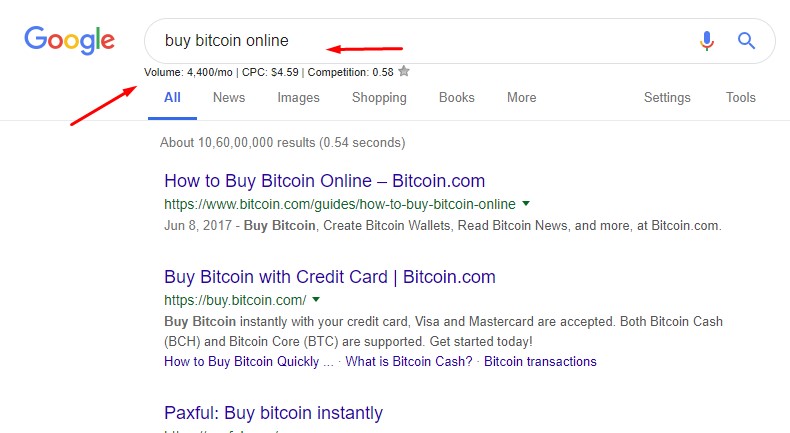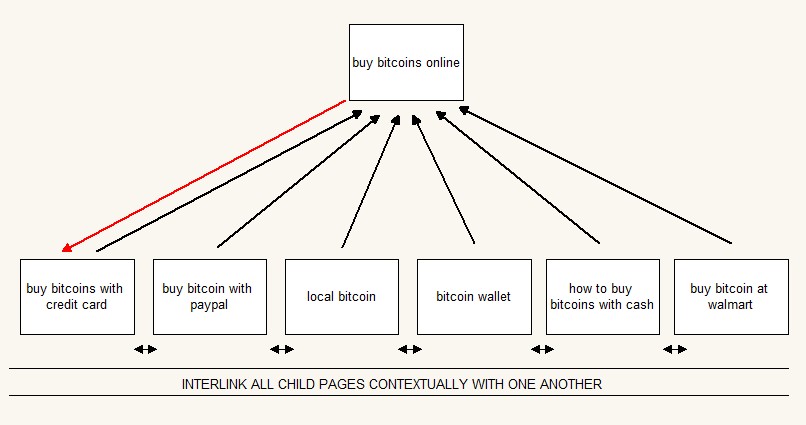I previously wrote a massive guide on silo seo called “Silo for SEO Guide – How To Build The Perfect Website SEO Silo Structures”.
It was a comprehensive guide, showing you exactly how to build your site using properly structured silos – both physical silos (directory / url based) and virtual silos.
If you missed it and you don’t have any idea on what silos are for seo – its definitely worth a read, and I cover using silos on both regular sites and e-commerce sites.
In this post I will reveal the exact methods that are used by the SEO Pros – to build out their silos.
Top SEOs use this single technique to build silos around a specific set of primary and secondary keywords that they are targeting to get top rankings.
This secret SEO method is cleverly used to boost rankings – by sculpting your internal links so that they gather and pass a ton of link juice internally to rank the parent pages in the silo structure for the desired keywords.
You can use this method very effectively for ecommerce seo as well, and easily build out silos that collect juice to the parent page… and then pass it down to specific product pages that you want to rank.
When these Silo pages are “powered up” with external backlinks, they start to rank very easily as if by magic… as the juice flows optimally across all the pages in the silo structure!
I learnt this technique from Kyle Roof and if you want to watch his video (it is an hour long) on the exact specifics on how this is done, then you can scroll to the bottom of this post. However, this article is a good primer and supplement to the video.
That said, lets get started!
Here’s how you can use the magic of Silos to boost your rankings…
Step 1 – Identify your Primary Keyword
You need to pick the primary keyword in the group that you wish to rank for. In this example we will use “buy bitcoin online” as our primary keyword. You will need to do proper research and gather your secondary keywords as well.
Your primary keyword will be the main keyword you want to rank. You will build out your main “parent page” around this single topic and optimize it perfectly using all the on-page SEO tips I have shown in the past and on how to do an seo audit.
Step 2 – Do a Google search for your primary keyword to uncover Google Suggested Related Keywords
Go ahead and do a Google search for your primary keyword. Use the free KeywordsEverywhere.com tool and make sure its active when you do the search. You will need the data it displays.
Scroll down the bottom of page 1 of search results and you will notice the “searches related” section block, as below (you will see some numbers data added next to each suggestion by Google. This data has been added by the KeywordsEverywhere extension, and is very handy for us to choose the silo structure supporting pages priorities and word volumes for each page that we go on to make as below.
Cut and paste this data. This data will be used for your supporting page structures, in the next steps.
Step 3 – Collate the data and prepare a spreadsheet with it
Take the Google related keywords data and prepare a spreadsheet. This data is important.
As you can see in this example I have created the following table.
You will be using these Google search related keywords data to…
(A) Build out the content on your parent page. You will use these keywords as part of sub-headings within the content of this parent page. Use them exactly as they are plus some descriptive words that talk about the sub-section.
(B) Create your child pages – which are essentially your supporting content pages for each of these keywords. Each of these will be optimized for each keyword, and the slugs as above will be used for their locations. The titles should have the keyword plus some other words – and written naturally.
The number of words each of the articles will eventually contain is also indicated and its just a function of how related the keyword is to my primary and how popular the keyword is. You will also notice that I marked some keywords as zero words for articles as I am not interested in ranking for those keywords.
You will need to optimize each supporting child page for the keyword.
Step 4 – Make Your Content Writing Plan
As a next step you need to write out your content for each of the topics as in the spreadsheet.
Step 5 – Identify one Main Child Page
You need to identify one main child page that will basically be your main secondary keyword. You can choose this based on what other keyword you think is the second most related and has good popularity.
In our example – I will choose “buy bitcoins with credit card” as its highly related and it is something people doing this search will want more information on.
I could go ahead and write a 1200 word article instead of 800 as shown, because this is the primary child page and I would like to give it more prominence that the other 800 word choices.
Step 6 – Publish Your Page and SILO structure them as below
Go ahead and create and publish your pages and interlink them as shown below. This is the correct way to structure them so the link juice flows properly internally for maximum power and when you build backlinks to your child pages and parent page.
Key Factors While Building Your Silo Linking Structure





Step 7 – Build External Backlinks
Now you need to build external links to your parent page and the supporting child pages. Make sure you build slowly and cover all the supporting child pages.
Your link juice will flow from supporting child pages up to the parent page and get “sculpted” with the anchor you use in the child pages to link up to the parent page – and the parent page will rank for that faster!
When you build your silo this way, you will notice that the parent page will also start to rank for the other keywords in the Google suggested related keywords group.
You are sculpting the link juice for those target keywords – in the supporting pages by linking up to the parent page with the keywords as the anchor-text links!
You can apply this for local SEO as well, but for that you will need to use a mixture of local events information, descriptions, maps and driving directions. If you have your own PBN – then you can channel the link juice down from them to your child pages. What is PBN? PBN is the short form of Private Blog Network.
Do this right and you will crush your competitors rankings almost overnight!
The Definitive Video on Silos for SEO – Link Structures and Silo
Have an hour to spare? I highly recommend this video by Kyle Roof (whom I learnt this technique from).
You already have learn the core method and key-takeaways from above, but this is a good watch if you want to dig deeper!
*Update*
I will be extending this method by showing you how to create custom navigation menus inside each Silo linking structure you make to push some more signals to Google as you will create tighter link clusters with this additional internal linking signal.
Please do opt-in and sign up to be alerted when I make this post after I run some live tests on it!





It’s a nice journal. Some essential tips and tricks for Secret Silo Structures for SEO. It’s useful to boost your web site SEO. Thanks.
Excellent GUIDE..!. I’m gonna build my website using your silos guide..!
Thxs in advanced..!
Hey thanks for the article.
I was wondering, what do you do when the sub topics(Searches related to: at the bottom of the page) cannot stand by themselves as a separate article. Do you combine a few of them together, so you can create a bigger and better article?
Thanks.
It is my understanding that this “Silo” method is old school? If so what are the Pros using today in 2020?
Setting up this structured doesn’t generate Domain Authority over time? If in fact this is the case then why couldn’t i bulid 100 sites with silos and have them all generating DA / juice and have them poing @ my main site??
Essentially what i would like to know is can i mine DA/ Power juice like i mine Bitcoin??
Correction; Setting up silos does generate DA , poing should be pointing. My bad i rushed
Nice little read this. Well explained.